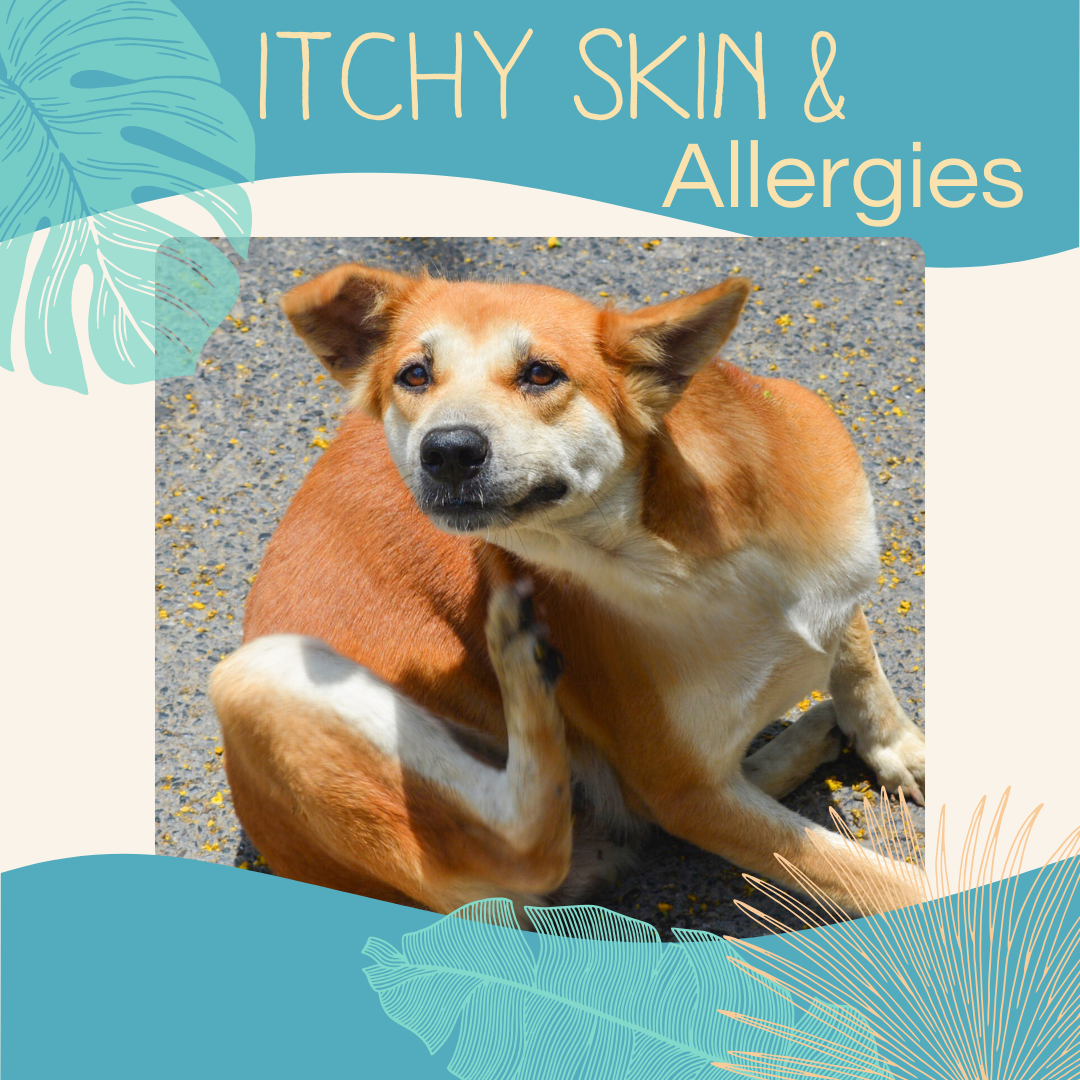
Allergies Unleashed: A Guide to Flea, Food, and Environmental Allergies in Animals Living in Hawaii
Allergies are a common issue in animal family members, and it’s important for owners to understand the clinical signs and typical causes of allergies. Clinical signs can include itching, redness, hair loss, and skin infections. The three most common causes of allergies in Hawaii pets are fleas, food, and environmental allergens.
Flea allergy is one of the most common types of allergies. It’s important to rule out flea infestation as the cause of itching before pursuing other treatment options. Treatment for flea allergy typically involves flea prevention and control measures, as well as medication to alleviate itching and inflammation. Although flea allergies are commonly seen, living on an island has particular issues associated with environmental allergies. Due to the island’s humid climate and lush vegetation, pollen and mold are often present, leading to frequent skin infections for animal family members. =
Flea Allergy
Flea allergy is caused by an allergic reaction to proteins in flea saliva. Dogs and cats with a flea allergy may experience intense itching, especially around the base of the tail, back legs, and belly. In severe cases, flea allergy can lead to hair loss, skin infections, and even anemia.
To diagnose flea allergy, your veterinarian will perform a thorough physical exam and may recommend additional tests such as skin scrapings or blood work. Treatment for flea allergy includes flea prevention and control measures, as well as medication to alleviate itching and inflammation. Your veterinarian may also recommend antibiotics or antifungal medications if your animal family member develops a secondary infection.
Food Allergy
Food allergy is caused by an abnormal immune response to certain proteins in an animal family member’s diet. Clinical signs of food allergy can include itching, gastrointestinal upset, and ear infections. The most common allergens are beef and chicken. Food allergies to grains are incredibly rare in dogs and cats. Food allergies most commonly develop in middle aged dogs and cats, and it can develop to foods that they have been eating for a long time.
To diagnose a food allergy, your veterinarian may recommend a strict elimination diet trial with a novel protein or hypoallergenic diet. It’s important to avoid blood testing for food allergies, as these tests are often inaccurate and can lead to unnecessary dietary restrictions. Treatment for food allergy involves identifying and eliminating the offending protein from your animal family member’s diet.
Environmental Allergy
Environmental allergies, also known as atopy or atopic dermatitis, are caused by an allergic reaction to airborne allergens such as pollen, mold, and dust mites. Clinical signs of environmental allergy can include itching, redness, and recurrent skin infections. Environmental allergy is typically a lifelong condition, and management involves identifying and avoiding the offending allergens as much as possible.
Two medications commonly used to manage environmental allergies are Apoquel and Cytopoint. Apoquel is a daily oral medication that works by blocking certain immune cells responsible for the allergic response. Cytopoint is a monthly injection that targets a specific protein involved in the allergic response. Our Team at Pilina Vet can help you decide which medication is best for your animal family member’s individual needs.
If your animal family member is suffering from allergies, Click HERE to easily book an appointment online. We look forward to connecting with you soon.